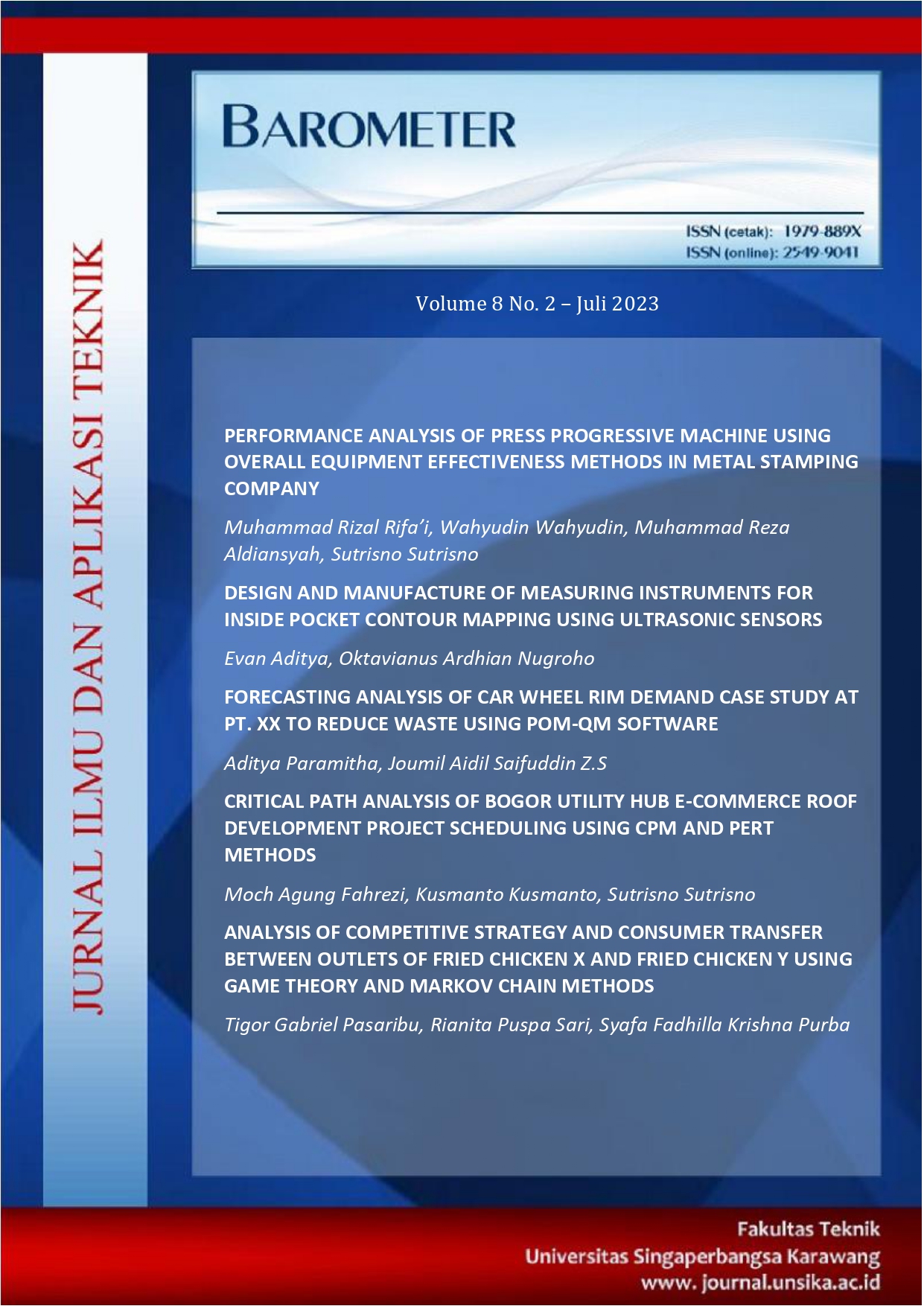DEVELOPMENT OF A WASTE TYPE WEIGHT ASSESSMENT TOOL USING MAKING TRIAL AND EVALUATION LABORATORY (DEMATEL) TO SUPPORT THE CONCEPT OF LEAN ASSESSMENT MATRIX
DOI:
https://doi.org/10.35261/barometer.v8i2.11151Abstract
One tool that can help eliminate waste is the lean assessment matrix (LAM). LAM is used to reduce waste by calculating the weight of the relationship between waste to obtain waste priorities. Waste prioritization considers assessment of severity, occurrence, interrelationships between waste and impact value. In the previous assessment matrix, calculating the weight of waste relationship values used the Waste Relationship Matrix (WRM) method, but the drawback of this tool was that the number of questions used was too many and the value conversion did not have a standard so it did not make it easy for respondents or human experts to measure the relationship between waste. So, in this research, Waste Assessment Waste Type Weight was developed by integrating the Decision Making Trial And Evaluation. Laboratory (DEMATEL) into LAM. Implementation of the Lean Assessment Matrix modification in the case study resulted in a priority rank of waste, namely Defect waste (W3, W2, W4) and Overprocessing waste (W16 and W15). The results of the LAM tool modifications carried out can help companies determine critical waste more easily and in line with company strategy.
Downloads
References
Pangesti, A. T. (2019). Pengembangan Tool Untuk Penerapan Lean Dengan Integrasi Waste Relationship Matrix (WRM) Dan House Of Risk (HOR). Surabaya: Institut Teknologi Sepuluh Nopember.
Pujawan, I. N., & Geraldin, L. H. (2009). House of risk: A model for proactive supply chain risk management. Business Process Management Journal, 15(6), 953–967. https://doi.org/10.1108/14637150911003801
Rawabdeh, I. A. (2005). A model for the assessment of waste in job shop environments. International Journal of Operations and Production Management, 25(8), 800–822. https://doi.org/10.1108/01443570510608619
Dalalah, D., Hayajneh, M., & Batieha, F. (2011). A fuzzy multi-criteria decision making model for supplier selection. Expert Systems with Applications, 38(7), 8384–8391. https://doi.org/10.1016/j.eswa.2011.01.031
Baykasoǧlu, A., Kaplanoglu, V., Durmuşoglu, Z. D. U., & Şahin, C. (2013). Integrating fuzzy DEMATEL and fuzzy hierarchical TOPSIS methods for truck selection. Expert Systems with Applications, 40(3), 899–907. https://doi.org/10.1016/j.eswa.2012.05.046
Patil, S. K., & Kant, R. (2014). A hybrid approach based on fuzzy DEMATEL and FMCDM to predict success of knowledge management adoption in supply chain. Applied Soft Computing Journal, 18, 126–135. https://doi.org/10.1016/j.asoc.2014.01.027
Kobryń, A. (2017). DEMATEL as a weighting method in multi-criteria decision analysis. Multiple Criteria Decision Making, 12(April), 153–167. https://doi.org/10.22367/mcdm.2017.12.11
Liu, H. C., You, J. X., Lu, C., & Chen, Y. Z. (2015). Evaluating health-care waste treatment technologies using a hybrid multi-criteria decision making model. Renewable and Sustainable Energy Reviews, 41, 932–942. https://doi.org/10.1016/j.rser.2014.08.061
Widiasih, W., Nurmalasari, N., & Handayani, L. (2019). Identifikasi Hubungan Keterkaitan Faktor- Faktor Pendukung Penerapan Lean Manufacturing di Indonesian Aerospace ( IAe ). 72–75.
Sharma, V., Dixit, A. R., & Qadri, M. A. (2016). Empirical assessment of the causal relationships among lean criteria using DEMATEL method. Benchmarking: An International Journal, 23(7).
Gabus, A., & Fontela, E. (1972). World problems an invitation to further thought within the framework of DEMATEL. Battelle Geneva Research Centre.
Ali, S. A. M., Sorooshian, S., & Kie, C. J. (2016). Modelling for causal interrelationships by DEMATEL. Contemporary Engineering Sciences, 9(9), 403–412. https://doi.org/10.12988/ces.2016.6214
Tzeng, G.-H., & Huang, J.-J. (2011). Multiple Attribute Decision Making : Methods and Applications (1st Editio). Chapman and Hall/CRC. https://doi.org/https://doi.org/10.1201/b11032
Bicheno, J., & Holweg, M. (2009). The Lean Toolbox: The Essential Guide to Lean Transformation_Fourth Edition. Production And Inventory Control, Systems And Industrial Engineering (PICSIE) Books : Buckingham, England.
Saaty, T. L. (1980). The analytic hierarchy process: Planning, Priority Setting, Resources Allocation. New York: McGraw-Hill International Book Company.
Si, S. L., You, X. Y., Liu, H. C., & Zhang, P. (2018). DEMATEL Technique: A Systematic Review of the State-of-the-Art Literature on Methodologies and Applications. Mathematical Problems in Engineering, 2018(1). https://doi.org/10.1155/2018/3696457
Chiu, W. Y., Tzeng, G. H., & Li, H. L. (2013). A new hybrid MCDM model combining DANP with VIKOR to improve e-store business. Knowledge-Based Systems, 37, 48–61. https://doi.org/10.1016/j.knosys.2012.06.017



